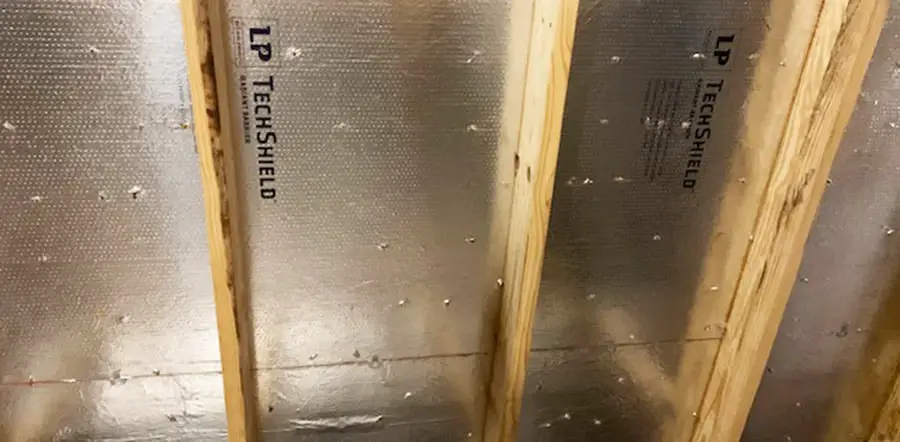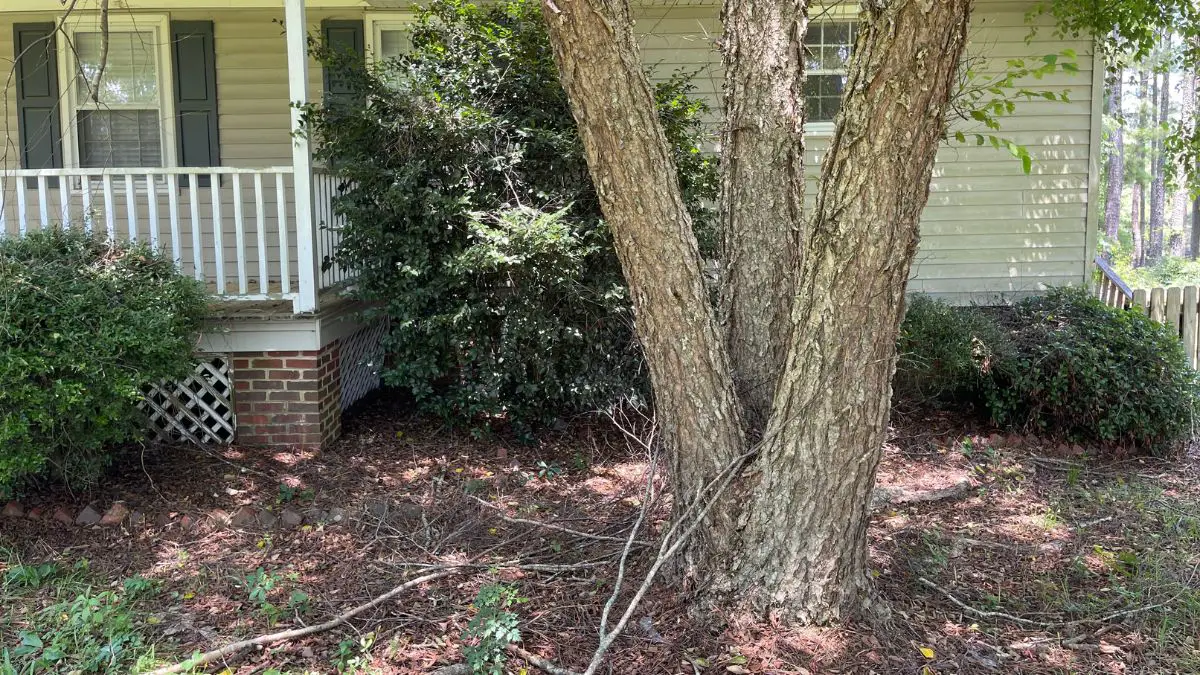
Today, many new construction homes install radiant barrier decking to reduce heat gain and lower the home’s overall energy costs. But is the added cost to install a radiant barrier sheathing worth it? How much savings can you expect on energy bills?
The benefits of radiant barrier decking are greater in warm weather climates and lesser in cold weather climates. Radiant barrier decking has been shown to save homeowners 5% to 10% on utility bills. No significant savings have been shown in colder climates; however, other benefits still make radiant barriers worthwhile.
According to Energy.gov, some studies have shown 5% to 10% energy savings in warm weather climates. They state that, in cooler climates, it’s more cost-effective to install more insulation instead of a radiant barrier.
While Energy.gov doesn’t cite the source of these studies, here in South Carolina, I’ve seen firsthand that inside attics with a radiant barrier decking can be as much as 25 degrees cooler than attics without. This is often directly reflected in lower monthly energy bills.
The Oak Ridge National Laboratory working in conjunction with the Department of Energy, has published some of the findings regarding the testing of radiant barriers but states that not enough testing has been performed north of Knoxville, Tennessee, and the southwest.
“The ORNL tests included summer and winter observations. So far, very little testing has been done in climates colder than that of Knoxville. Also, little testing has been done in hot, arid climates such as the southwestern United States.” 1
Not to discourage you from installing radiant barrier decking in your existing or new home. It’s quite the contrary. You can’t fully measure the value of a radiant barrier in dollars and cents.

What Is a Radiant Barrier?
Radiant barriers are building materials that reduce heat transfer and reflect thermal radiation outside. They are a thin layer of materials that feature highly reflective surfaces, such as aluminum.
In attics, they are often lined on the inner sides of roofs. They are popular because they reduce the need for costly and energy-consuming cooling solutions like air conditioning.
You can transfer heat in one of three ways: radiation, conduction, and convection. Because an attic is at the top of a building, most of the natural heat it receives is radiation from the sun in the form of ultraviolet (UV) rays.
As the roof is continually exposed to sunlight, the heat is absorbed and transferred through the roofing material (conduction) and into the attic air (convection).
The radiant barrier was invented to prevent the radiated heat from being absorbed by the rafters and insulation layers below. For it to work correctly, the barrier must be separated from these other roofing materials by airspace. The airspace is necessary to prevent the barrier from touching the rafters and other ceiling parts.
It is important to remember that while the barrier keeps out radiated heat, it can still transfer heat to anything it comes in contact with via conduction. A good analogy for this is how heat from your coffee travels up the stem of your teaspoon. Failure to include this minute but critical space will result in a radiant barrier that funnels heat into the attic, which is the exact opposite of what we want.
Types of Radiant Barriers
There are several types of barriers, and most of them can be neatly pigeonholed as either aluminum foil laminates or aluminized plastic films. The former comprises oriented strand boards (OSB) coated with foil to make them reflective.
These are often laminated to the underside of the OSB and perforated to allow water vapor to escape the attic. Aluminized plastic films are made up of aluminum particles that are deposited on plastic film. All barriers across both categories can feature a reflective surface on one side (single-sided) or both (double-sided).
One of the radiant barrier roof decking leaders is Solarboard by Norbord; however, other manufacturers also produce radiant barrier roof decking with similar benefits.
Radiant barrier roof decking is a structural OSB roof board coated with a heat-reflecting foil laminated to one side. When installed, Solarboard has been shown to keep a house about 30 degrees cooler.
This product can easily be installed in the new construction of a house. When re-roofing a house, remove the old roof decking and install a new radiant barrier roof decking before installing the roof coverings.
Benefits of Radiant Barrier Roof Decking
- Many builders use OSB radiant barrier sheathing to construct new homes as part of an overall energy efficiency plan created during the home’s planning stages. OSB radiant sheathing can reflect up to 97% of solar radiation, lowering attic temperatures up to 30°F in the summer months.
- A cooler attic will keep your house cooler overall.
- Radiant barriers work great in hot climates. The hotter it gets, the more benefits a radiant barrier provides.
- A cooler attic means less stress on the home’s HVAC system and improved attic ductwork efficiency. The more efficient the HVAC operates, the longer the lifespan of the HVAC system.
- A radiant barrier can reduce your HVAC size by ½ ton in warm climates because the unit doesn’t have to work as hard to cool the house.
- Radiant barriers help balance out the temperature in the house by reducing hot and cold spots, which can improve the house’s overall comfort level.
- Radiant barriers help to hold heat inside your home during the winter months.
- Radiant barrier roof sheathing is maintenance-free and doesn’t deteriorate over time.
- Radiant barriers can help prolong the life of your roof shingles.
- It can help you qualify for Energy Star Rating, thus lowering energy costs.
Is Radiant Barrier Roof Decking Required?
As of this writing, I know of no building code requirement for a radiant barrier decking in the United States. The desire for a radiant barrier will likely vary based on where you live and is entirely at the homeowner’s discretion.
Homes in cooler climates are less likely to want (or need) attic radiant barriers. Cold climates do require higher levels of thermal insulation up to R60 because of their documented energy-saving qualities. In warmer climates, homeowners might hold radiant barriers in higher regard as part of an overall energy-saving plan for their home.

Is a Radiant Barrier Better Than Insulation?
While both radiant barriers and insulation serve the purpose of protecting you from the elements, they go about it in very different ways. The difference is such that a direct comparison is not possible.
As a matter of fact, in hot climates, the two are more complementary than anything else. Working together, the two will ensure an attic stays warm when it is cold and cool on hot days.
Installing a radiant barrier will also help preserve your insulation because keeping an attic consistently cool inhibits mold and bacteria growth in the walls, ceiling, and floor. Over time, extreme temperature fluctuation may lead to the gradual disintegration of the insulating materials. The consistent coolness that is facilitated by a radiant barrier slows down this process immeasurably.
In cold climates, attics hardly ever get hot. Combining a radiant barrier and insulation might not be of any real value. If anything, you would be better off adding more insulation than a radiant barrier in such circumstances.
How Much Does Radiant Barrier Installation Cost?
The cost of radiant barrier installation may vary depending on your location, the type of barrier to be used, labor (Professional or DIY?), the number of materials required, and the job’s overall complexity. Several other factors may also impact the overall installation costs.
According to HomeAdvisor, radiant barrier installation costs for a 1,500-square-foot attic range from $740 to $2,840 on average. Again, these figures may vary so that you may encounter prices over or under this range.
As far as materials, including the radiant barrier itself, prices range from $0.10 per square foot up to $0.90 per foot. The primary determinant of this cost is the type of barrier that is to be used. Often, double-sided barriers are pricier than single-sided ones.
Next, we have labor costs. Most professionals will charge anything between $30 and $80 an hour to install a radiant barrier. This cost is determined by the scale and complexity of the job. The more reputable installers tend to cost more.







